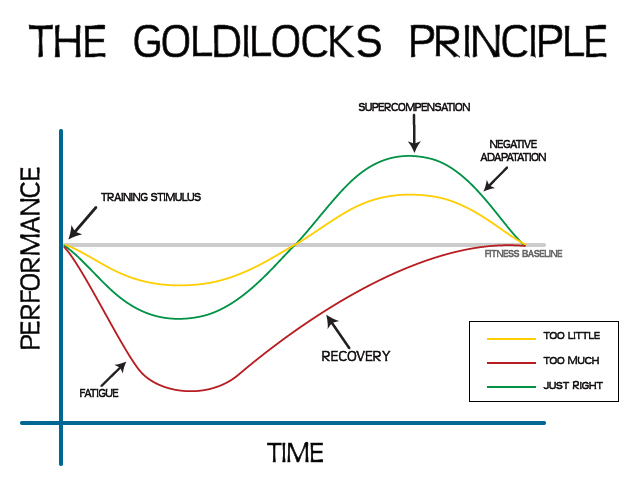Last week, we laid out some general guidelines for athletes heading into their off-seasons. You should read it, if you haven't already. Today, we'll delve into some specifics for overhead athletes (i.e. baseball, softball, javelin, shot put, swimmers (though it seems as if they never have an off-season), etc.). Shoulders are rather complicated and annoyingly fickle joints that can develop irritation easily which is why proper attention MUST be paid to shoulder mechanics and care during the off-season. There is nothing "natural" about throwing a heavy object (or a light one really, really fast) and shoulders can get all kinds of whacky over a long, repetitive season. I'm going to keep it sweet and simple.
1. Restore lost mobility and improve stability
- Hips: they get locked up, especially on athletes that travel a lot during the season (helloooo long bus rides). Restoring mobility will go a long way in preventing hip impingements, angry knees, and allow for freer movements in general. Locked up hips will prevent safe, powerful throws and batting, thus, now is the time, Padawans, to regain what was lost!
- Lats: Usually tighten up on the throwing side and create a lovely posture that flares the rib cage and makes breathing not-so-efficient. Loosen up these bad boys!
- Breathing patterns: Those need to be re-trained (or trained for the first time), too. Breathing affects EVERYTHING. Learning proper breathing mechanics will do a lot to restore mobility (T-spine, shoulder, and hips), increase stability (lower back and abdominal cavity), and create a more efficient athlete (more oxygen with less energy expended to get it). I've written about it before HERE.
- Pecs and biceps: These guys are gunky and fibrotic and nasty. Self-myofacial release is good, finding a good manual therapist would be even better, to help knead that junk out! One caveat: make sure that as you release these two bad boys, you also add stability back into the shoulder. This means activating lower and mid-traps and the rotator cuff muscles to retrain them to work well again. Why? Most likely, the pecs and biceps are doing a LOT of stabilization of the shoulder (which they shouldn't be doing so much) so if you take that away through releasing them, one of two things will happen: 1) injury will occur since there's nothing holding stuff in place, 2) no injury, but the pec and/or bicep will tighten right back up again as your body's way of producing stability. So, mobilize then stabilize!
2. Improve scapula movement and stability
Along the lines of restoring mobility everywhere, the scapula need particular attention in overhead athletes as they are responsible for pain-free, overhead movements. Below is a handy-dandy chart for understanding scapula movements:
Now, over the course of the season, an overhead athlete will often get stuck in downward rotation therefore at in the early off-season (and throughout really) we want to focus on upward rotation of the scapula. Exercises like forearm wallslides are fantastic for this.
Eric Cressey notes that the scapula stabilizers often fatigue more quickly than the rotator cuff muscles. This means the scapula doesn't glide how it should on the rib cage, which leads to a mechanical disadvantage for the rotator cuff muscles, which leads to impingements/pain/unstable shoulders.
As we increase the upward rotation exercises, we want to limit exercises that will pull the athlete back into downward rotation, i.e. holding heavy dumbbells at their sides, farmer walks with the weight at sides, even deadlifts.(whoa now, I'm not saying don't deadlift, but limit the volume on the heavy pulls for a few weeks, and like I said in the last post, training speed work will limit the amount of load yanking down on those blades.) Instead, athletes can lunge or farmer carry in the goblet position (aka, one bell at their chest).
There is more to be said, but let us move on, shall we?
3. Limit med ball work
At SAPT, we back off on aggressive med ball throwing variations for the first couple weeks post season as the athletes have been aggressively rotating all season. Instead, we'll sub in some drills that challenge the vestibular such as single-leg overhead medicine ball taps to the wall. (I don't have a video, sorry.)
Or, stability drills such as this:
If we do give them some low-intensity throws, we'll have them perform one less set on their throwing side than on the non-throwing side.
4. Limit reactive work
We don't usually program a lot of sprint work or jumps the first few weeks. If we do program jumps, we'll mitigate the deceleration component by adding band resistance:
5. Keep intensity on the lower end
As mentioned in the last post, instead of piling on weight, we enjoy utilizing isometric holds, slow negatives, and varying tempos to reap the most benefit from the least amount of weight. We also maintain lower volumes over all with total program.
There you have it! Tips to maximize the off-season and lay a strong, stable foundation for the following season!




